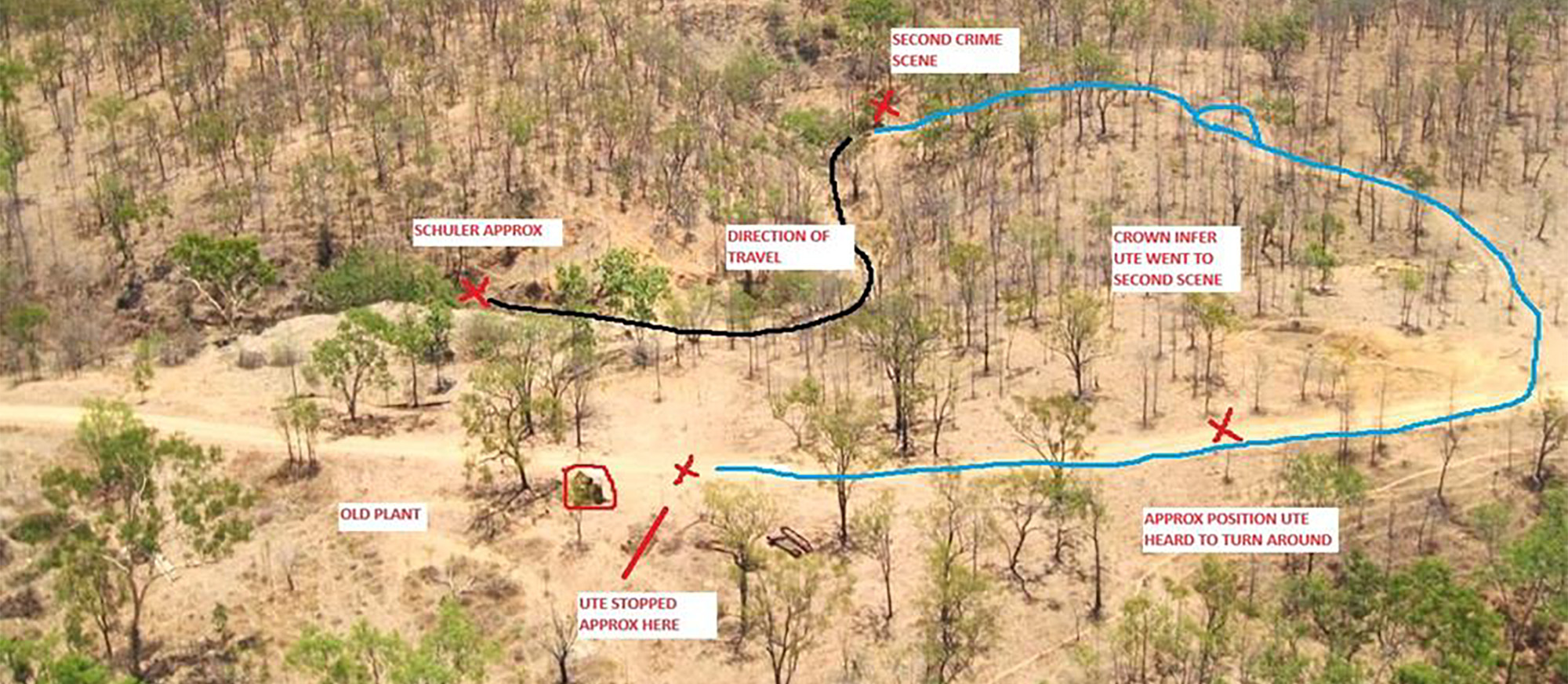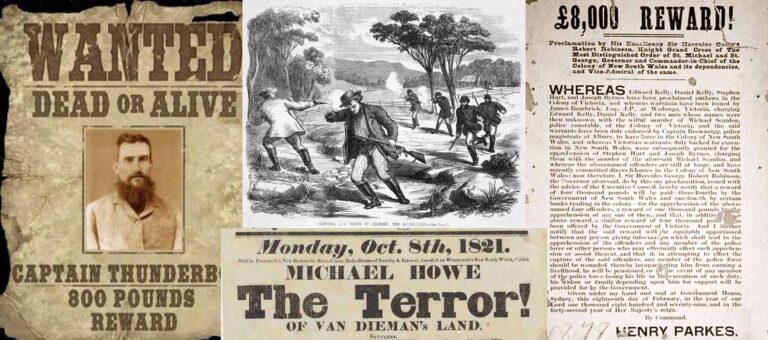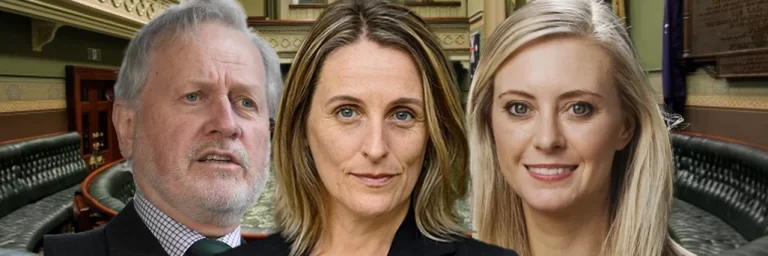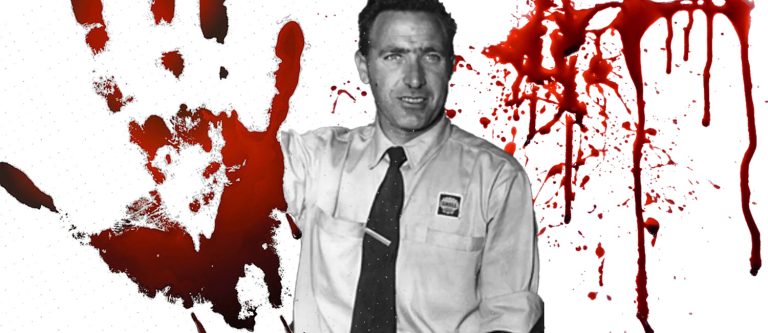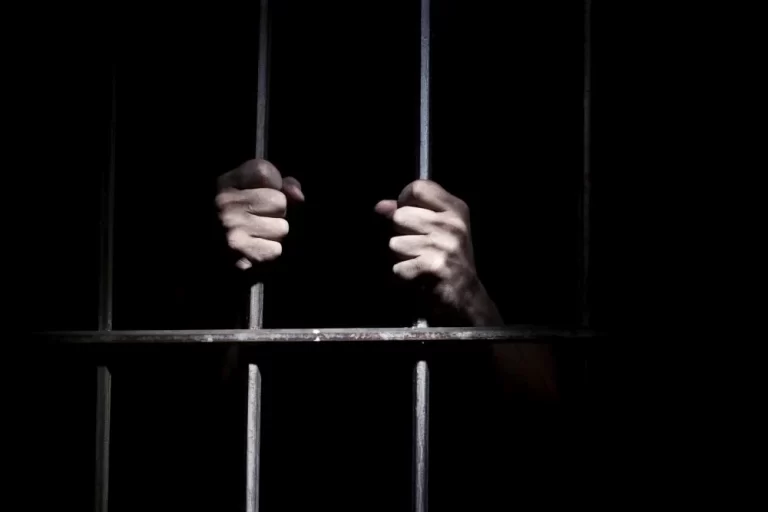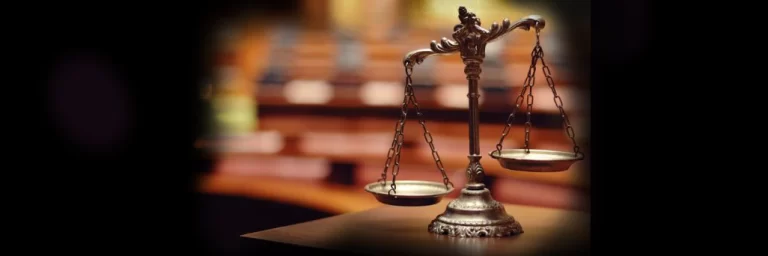The Disappearance of Bruce Schuler: Case Concerns
The following is taken from a book published by former detective, Graeme Crowley in 2025: ‘Fools Gold? The Bruce Schuler Murder’. Mr Cowley also presents a podcast, and discussed this case in one of his episodes.
According to the Prosecution’s Case
Refer to the image:
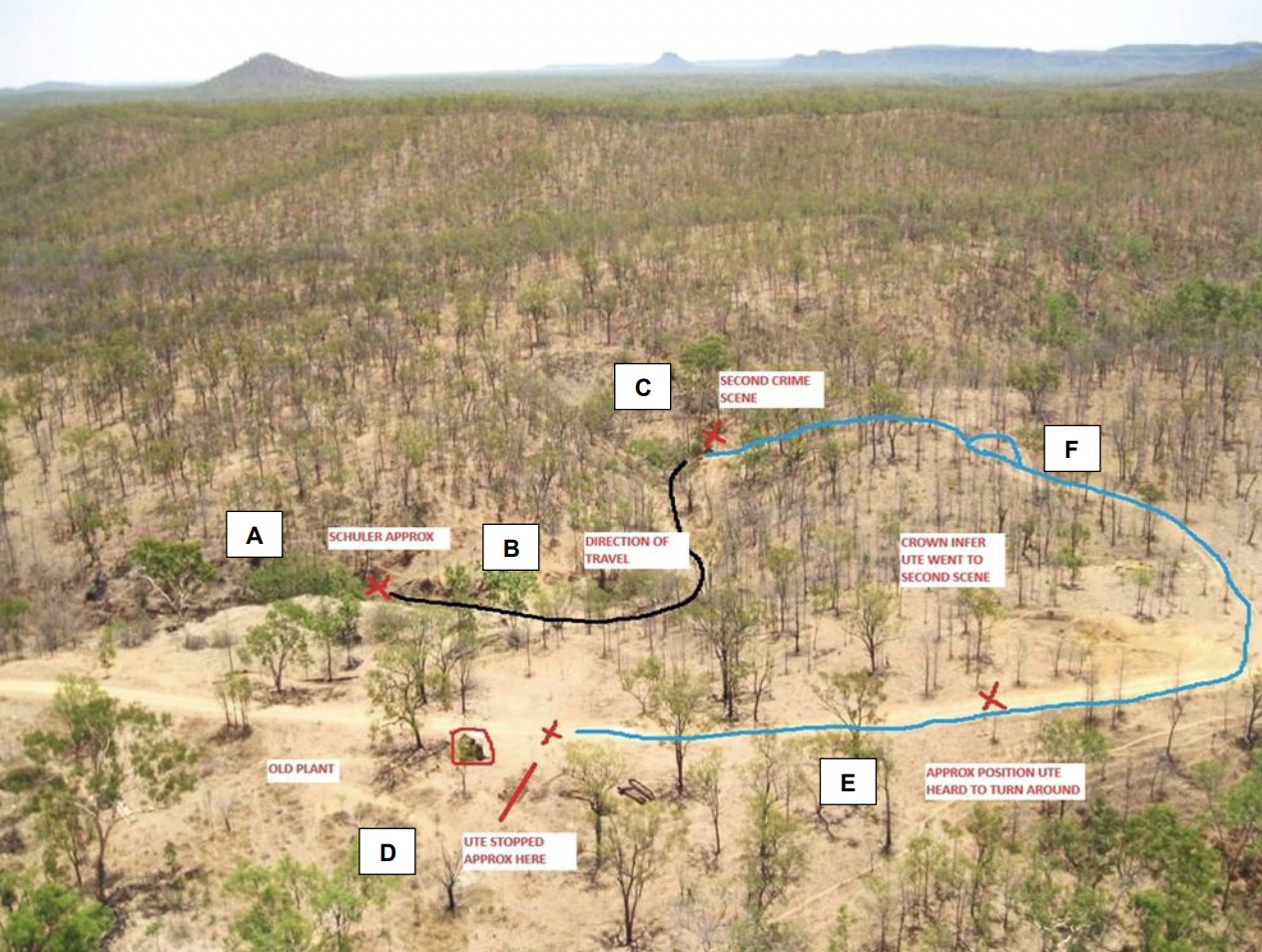
Location (A) / Nominated Crime Scene 1
Three prospectors, Tremain Anderson, Daniel Bidner, and Kevin Groth report fellow prospector Bruce Schuler was last seen at this location. The prosecution’s case is that Bruce Schuler was shot and injured here by Dianne Wilson-Struber accompanied by Stephen Struber. There were no eyewitnesses to a shooting.
Location (B)
The prosecution’s case is that Schuler travelled this path up the gully on foot, after being shot.
Location (C) / Nominated Crime Scene 2
A small amount of forensic evidence was found at this location, approximately 140 metres from Location (A) / Crime Scene 1. This crime scene was identified after the area had already been thoroughly searched by police, who reported walking approximately 500 metres up the gully, shoulder-to-shoulder and finding ‘nothing of interest’.
Location (D)
Bidner and Anderson claimed the Struber’s (unregistered ‘bush basher’) ute stopped here. Both Bidner and Anderson gave changing accounts regarding what they witnessed from their locations.
Location (E)
Bidner and Anderson claim the Stuber’s ute did a full U-turn at approximately this location and went back in the direction of the Palmerville homestead.
Location (F)
The prosecution’s case asked the jury to infer that the Struber’s ute drove this path to Location (C) / Crime Scene
There was a Complete Lack of Evidence
Four search warrants were executed and Palmerville station was searched extensively. There was no forensic evidence linking Dianne Wilson-Struber or Stephen Struber to:
- Location (A) / Crime Scene 1.
- Location (B) the path up the ravine – No footprints, drag marks or signs of struggle.
- Location (C) / Crime Scene 2 – Nor anywhere along its approach by vehicle or on foot.
- Location (D) where ute was reported to have stopped, and where Bidner claimed they exited the vehicle.
- Location (E) where Anderson and Bidner originally stated the Struber’s ute did a full U-turn.
- Any point between Location (D) where the vehicle stopped, and Location (A) where Schuler was last seen – No footprints, and no ammunition or shell casings.
- A murder weapon, including no gunshot residue found on their persons or clothing.
There was no forensic evidence linking Dianne Wilson-Struber or Stephen Struber to Bruce Schuler. Not a single hair, drop of blood or sweat from Schuler was found on:
- Dianne or Stephen’s person
- Their clothing
- Any of their vehicles
- Inside their homestead
- In any of Palmerville Station’s outbuildings or outstations
There was also no forensic evidence linking Bruce Schuler to:
- Location (A) / Crime Scene 1 – where the prosecution claimed he was first shot and injured.
- Location (B) the path prosecution claimed Schuler ran, whilst injured – no footprints, no drag marks, no personal belongings, no discarded equipment, not a single drop of blood.
There was no forensic evidence, and only a small amount of (questionable) physical evidence linking Bruce Schuler to:
- Location (C) / Crime Scene 2 – the legitimacy of this crime scene has been called into question by former detective Graeme Crowley. Refer section titled ‘Legitimacy of Crime Scenes Questioned’ for further details of (questionable) physical evidence found.
Investigation by Former Detective Graeme Crowley Crowley’s recent investigation has highlighted the following:
- The police have no confirmation Schuler is deceased, no body, no cause of death, no murder weapon, and no motive for the Strubers to murder
- The defendants have made no admissions or confessions. They have denied being involved in the disappearance of Bruce Schuler and continue to deny any involvement.
- The police have no witnesses, apart from the prospectors, and no one who actually saw Schuler shot, killed or kidnapped.
- There was minimal DNA evidence, found at a contaminated outdoor location.
- There were tyre impressions and damage to trees and an anthill consistent with, but not definitive as, having been made by either the Struber’s unregistered ‘bush basher’ Landcruiser or the registered Landcruiser. It was later confirmed (after conviction of the defendants) that the tyre tracks could NOT have been made by the unregistered vehicle, which was the vehicle identified by Anderson and Bidner.
- There was no evidence to show that Schuler had ever been at Crime Scene 1, apart from the evidence of the prospectors.
- The only conclusive evidence was that Schuler, or at least his blood and DNA, had been at Crime Scene
30 Days of Investigation – Still No Evidence
After thirty days of intensive searches, there was no evidence to connect either Dianne Wilson-Struber or Stephen Struber to either crime scene. No blood, DNA, physical evidence or forensic evidence had been found on their bodies, their clothing, in or on their vehicles, or in their homestead or outbuildings. The listening and tracking devices which policed placed on the Struber’s phones did not uncover any incriminating evidence. (Crowley. pp 179-180, 243-246)
Indigenous Police Tracker
Aboriginal police tracker, Barry Port, 70, spent three days and nights searching for any sign of Schuler and stated that, “I could not find any signs to follow. We were looking for boot prints, bits of clothing, his pick, shovel or metal detector, stuff like that.“
Sergeant Frank Falappi, who works closely with Mr Port, said the tracker was impressive to watch…. “It is amazing what he can see in the landscape. He can see human and animal tracks in the bush that are almost impossible for us to make out, even when he shows us up close.” (Crowley, pp 241, 398)
Legitimacy of Crime Scenes Questioned
No Evidence of Crime Scene 1 or on Path to Crime Scene 2
There was NO evidence of either Bruce Schuler, Dianne Wilson or Stephen Struber ever being at Crime Scene One. No abandoned physical possessions. No blood, no DNA, no sign of a struggle or drag marks, no tyre impressions, no footprints, no ammunition or shell casings. No forensic or physical evidence was located between Crime Scene 1 and Crime Scene 2.
There is no evidence, apart from the word of Anderson and Bidner, two accompanying prospectors, whose credibility is in question, that proves Schuler was ever in the gully, or that the Strubers’ were ever on the ridge line above. (Crowley. pp 329-337, 345-346)
Prosecution Claims Schuler Ran Wounded but Left No Blood or Evidence Behind
The prosecution asked the jury to infer that Schuler ran away in fear, carrying a significant number of bulky, loosely held possessions, without dropping a single item or leaving a single trace of forensic evidence. (Crowley. pp 329-337, 345-346)
Crime Scene 2 uncovered approximately 3 small burnt patches of grass on the side of a steep ravine, partially burnt matches, an empty film canister, bailing twine, and only small blood stains on leaves and rocks. One of the partially burnt matches was later found to have Bruce Schuler’s DNA on it, as did the black twine; the blood drop was matched to Schuler’s blood as was the blood on the rocks. (Crowley. pp 161, 187, 241, 329-337, 345-346)
Partially Burnt Match Tested – Identifying DNA of Bruce Schuler Only
- A partially burnt match was found and tested for DNA. Bruce Schuler’s DNA was identified; no other DNA was identified on or near the match, or anywhere in the surrounding area.
- When questioned by Crowley about this, Detective Sergeant McLeish alleged that the Strubers had Bruce Schuler’s DNA on their hands and transferred it to the match when they lit a fire to burn evidence on the grass, a claim made with zero evidence.
- Note, the Struber’s DNA was not found on the match or any area surrounding the site, and Bruce Schuler’s DNA was not found on the Strubers, their clothes or any of their property. (Crowley. pp 161, 187, 241, 329-337, 345-346)
Prosecution Claims use of Weapon that Would Have Left Evidence
No Footprints or Drag Marks
Vehicle Discrepancies and Crime Scene 2
Initial Police and SES Searches Found Nothing at Crime Scene 2
Anderson Found Nothing at Crime Scene 2
Graeme Crowley’s investigation points out that Anderson and Bidner both reported that the vehicle in question completed a U-Turn and returned in the direction of the homestead, not continuing towards the location of Crime Scene 2. Anderson and Groth remained in the area for many hours and did not see or hear a vehicle return. Anderson claims to have run the length of the gully ‘looking for blood’. If there was any evidence at Crime Scene 2 at this time, including a body or blood, Anderson would have seen it.
Speculation that the Strubers came back later that night to locate a wounded or murdered Bruce Schuler in a gully, moved his body, and burnt a few small patches of grass without leaving or carrying away any forensic evidence, is extremely unlikely if not impossible, and does not align with the statements of the prospectors, nor explains the lack of discovery of this scene until many days later. (Crowley. pp 329-337, 345-346)
Excerpt from news article: “I went back to where the gully was, where the shots were fired from, and I ran pretty much every gully,” Mr Anderson told the court. “I was looking for any signs of blood or anything.” (9 News Report, Prospector looked for blood after shots. 2015)
Where The Crime Scenes Staged?
Crowley has raised serious questions about the legitimacy of the Crime Scenes and outlines compelling evidence of crime scene staging. (Crowley. pp 329-337, 345-346)
Witness Credibility
Serious concerns have been raised surrounding witness credibility. The prospectors’ statements changed dramatically throughout the investigation and trial. Below are inconsistencies identified in the prospector’s statements.
Witness Accounts Didn’t Match
None of the prospector’s versions of events aligned in timing, actions, or locations on either the day before, or day of, Schuler’s disappearance. (Crowley. pp 390-391)
Previous Criminal Convictions
Bidner and Anderson both had previous criminal convictions at the time of Schuler’s disappearance. Bidner has criminal history dating back to 1984, most recently for cultivating 100 kilograms of cannabis. Anderson has criminal history dating back to 1992, most recently for cultivating 300 kilograms of cannabis. Despite describing as each other as ‘almost family’, they each denied having any knowledge of the others drug related offences. (Crowley. pp 93-96)
Inconsistencies Regarding a Weapon
- Bidner’s description of the firearm he saw varied from a rifle, shotgun, or a black stick. In one interview he stated, ‘Oh mate. Black stick, that long. That’s all I saw. Wouldn’t know if it was a rifle, a shotgun, what.’ In another interview Bidner stated, ‘‘I thought it was a shottie (shotgun) myself, but the boys said, nah, Dan, that was a high-powered rifle. And I said, oh, I really thought it was a 12-gauge or something, you know.’ By the trial, once it was known that a lever action .22 rifle was missing from the Strubers, Bidner stated, ‘she looked down at it like she was loading it.’ and motioned a lever action loading movement. (Crowley. pp 41, 266-276)
- All three prospector’s had years of experience with firearms and stated hearing very different gunshots. In initial statements Bidner stated he heard a shotgun, Anderson stated he heard a 30/30, and Groth stated he heard a high calibre rifle, ‘fired in the air… the noise it made was not muffled…’ None of these firearms make a similar sound to the firearms missing from the Strubers and claimed to be used in Schuler’s murder (.22 Remington lever action rifle, and .357 Magnum handgun). At trial, the prosecution claimed the .22 Remington (which is not a loud weapon) fired the first shot. At trial, Bidner then denied saying he heard a shotgun. (Crowley. pp 266-276, 392)
- Anderson stated that his ears were ringing from the gunshot. His position at the time was 80m away. It is considered highly improbable that a gunshot would cause anyone’s ears to ring from that distance. (Crowley. pp 362-366, 398)
- Bidner stated he knew Dianne was getting a rifle from behind the car seat, ‘Because that’s what she does. She keeps it there all the time bro.’ Yet, Bidner also stated that he had only met Dianne once, one week earlier. George Wilson (Dianne’s brother) confirmed that any rifles carried in vehicles were usually kept between the seats with the barrel either pointing down or up. (Crowley. pp 113-114, 268-273)
- Groth stated that he smelt gunpowder from his position 300m away. Smelling gunpowder from this distance is highly unlikely. (Crowley. pp 393)
- All three prospectors claimed to hear one or multiple ‘clangs’. Whether the clang was after the first or second gunshot, or after both gunshots was inconsistent. (Crowley. pp 392)
Inconsistencies in Daniel Bidner’s Statements
Bidner claimed at trial that the inconsistencies in his statements taken on the first evening were due to the conversation taking place, ‘at about midnight.’…’after talking to several policemen all night long.’ There had only been two phone calls, a total of no more than thirty minutes, ending at around 9.30 p.m. (Crowley. pp 254-255.)
Bidner Caught in Lies
- Bidner changed all four tyres on his 4×4 ute two days after Schuler’s disappearance. The police were not made aware of this until the 1st of October, many months after Schuler’s disappearance. Bidner explained he had a blow out and had mixed tread on the remaining tyres, so they all needed to be changed. He later stated that the tyre change was pre-planned. When asked by journalist, Robert Reid, Bidner stated he had been ‘busted for not roadworthy tyres’. Bidner’s vehicle was unable to be tested as a match for the tyre tracks to Crime Scene 2. (Crowley. pp 149-150)
- Bidner told police he had never been on Palmerville Station, when he had been trespassing on Palmerville Station for over 10 years. There is video footage of Bidner on Palmerville Station as recently as one week prior to Schuler’s disappearance. (Crowley. pp 116, 390)
- Bidner did not disclose to police that he had taken video footage during the prospecting trip on the day before and morning of Bruce Schuler’s disappearance – and continued to deny knowledge of a second video even during the trial. These videos called into question timing, actions, and locations of Bidner, Anderson and Groth’s stated movements leading up to Schuler’s disappearance. (Crowley. pp 295-301)
Bidner Could Not See the Vehicle Without Standing
Bidner stated multiple times he ‘did not stand up’ to view the vehicle in full as it was leaving. During video re-enactment he stated he ‘rose to his haunches’, however, it is clearly visible he is positioned at full standing height to enable him to see the roof of the vehicle as it passes. During a second video re-enactment, he states he ‘walked up’ out of his position to see the roof of the vehicle. By the trial, Bidner vigorously denied ever saying that he ‘did not stand up’. (Crowley. pp 247-256)
Bidner’s Statements Identifying the Strubers Changed Multiple Times:
- First statement, ‘BIDNER observed Stephen STRUBER and Dianne WILSON to exit the vehicle… STRUBER & WILSON have walked over to the gully.’ – A distance of approximately 50m.
- A statement taken only 2 hours later, ‘my last vision was him and her getting out of the car.’
- The next statement taken 24 hours later, ‘Before he even comes around the front of the car, I see her pull the gun from behind the seat.’
- Later in the same interview, ‘Yeah, she got out. I can see he’s getting out too. Still turning the car off. She’s a bit quicker than him. Her door first, his second. Then she’s flicked the seat forward. And that’s the last thing I saw.’
- Two weeks later, at his second re-enactment, Bidner told police his view of Stephen Struber was obscured, but he presumed it was him in the car, because they always travel together.
- At the committal hearing, Bidner stated he did not see the driver.
- At the trial, Bidner stated he did not see Stephen outside of the vehicle.
- The police claimed that Bidner positively identified Dianne, having only met her once before, from a distance of approximately 200m away. (Crowley. pp 277-28, 421)
Inconsistencies in Tremain Anderson’s Statements
Anderson’s statements changed multiple times when identifying the vehicle occupants:
- In a statement the day after Schuler’s disappearance, ‘He saw a glimpse of Stephen as he drove past and recognised him.’
- At his video re-enactment, when the vehicle drove up the track driven by a police officer with the video camera rolling, he was unable to see the face of the driver or the interior of the vehicle.
- At the trial he identified the Struber vehicle, and both Stephen and Dianne. He was 100 per cent certain it was Stephen and Dianne. ‘As plain as day.’ (Crowley. pp 282)
- The police claimed Anderson positively identified Stephen, having only ‘seen a glimpse’ of the driver, from a distance of approximately 80m away. (Crowley. pp 277-282, 421)
Conflicting accounts of Tremain Anderson going to Palmerville Homestead
Inconsistencies have been identified between Anderson’s statements and police notes regarding Anderson attending Palmerville Homestead during his search for Schuler:
- Detective Sargeant McLeish’s entry in a police diary included contemporaneous notes of the witnesses’ names, the timing of events, and the significant occurrence of Tremain going to the homestead (which is located on the southern side of the Palmer River). The diary notes for this entry are as follows:
- 1000 – Briefing with 3 witnesses.
- Daniel BIDNER.
- Kevin ‘Rusty’ GROTH.
- Tremiane ANDERSON (sic).
- 0930 – 1000 hrs – first shot fired.
- Tremaine to homestead 1530 hrs.
- Strubers ute not present.
- Yelled repeatedly – no one came out of house.
- NB Medical conditions for Schuler [REDACTED].
- 1015 Scene – river.
- Briefing.
- Briefing RCC.
- Detective Sergeant Riles’ police diary included an entry taken during a police briefing held on Tuesday 10 July 2012, which stated:
- Anderson goes to homestead at 1630 hrs (4.30pm) and can’t find anyone.
- Anderson claimed in multiple statements that he walked as far as opposite the homestead (on the northern side of the river) whilst looking for Bruce Schuler.
- In his Tuesday night statement he said in part, ‘Whilst Dan was gone, I had been back down the river and I was now looking for blood, scanning everywhere. I was freaking as it was 3.00 p.m. in the afternoon, and we had gun shots fired at around 10:00 a.m. and two men missing. I pretty much went to opposite Palmerville Station and yelled out, ‘Bruce, Kevin.’ There were no replies, no nothing.’
If the police records are correct that Anderson did go to the Palmerville Homestead, the implications are as follows:
- Anderson has lied in statements regarding his movements following Schuler’s disappearance.
- Anderson seemingly felt safe enough to walk to the homestead and call out to the Strubers’, even though he had repeatedly claimed to police that he feared the Strubers, was concerned they were armed and dangerous, claimed they had shot at him in the past, and at the time was worried he too may be stalked and shot.
- The timing recorded by police calls into question other reported movements by all of the prospectors:
- Police note that Anderson attended the homestead at either 3:30pm or 4:30pm.
- The homestead is minimum 1 hours walk from the prospector’s camp.
- Groth and Anderson’s statements both claim they were meeting back at camp at 3:15pm.
- Anderson, Groth, and Bidner’s statements all claimed that Bidner returned from Maytown arriving back at camp at 4:30pm where Groth and Anderson were having a beer.
Despite all the above concerns and inconsistencies, the police did not challenge or clarify Anderson’s claims any further. This evidence was not raised at trial and the jury were not advised of these conflicting reports. (Crowley. pp 135, 257-260, 359)
Inconsistencies with Kevin Groth’s Statements
Groth’s description of the vehicle roof changed from beige to ‘rusty dirty orangey colour’. Even though the second description did not match either of the Strubers vehicles, this was never queried by police nor raised at trial. (Crowley. pp 161)
Inconsistencies in Anderson, Bidner and Groth’s Whereabouts
- Bidner and Anderson stated they travelled directly to Palmerville Station on the Sunday 8th July, arriving at lunch time. They did not disclose going to Fairlight Station (4-5km past their campsite) prior to setting up camp and prospecting for 1-3 hours. This location was later confirmed via video footage. (Crowley. pp 295-301)
- Groth and Anderson’s statements about Groth’s return to camp late in the afternoon after Schuler’s disappearance differ considerably. Groth first claimed, ‘I left the trees around 3:00 p.m. because I saw Tremain…’ Two days later, Groth states, ‘…I watched that is was Tremain, he’s heading back to camp walking straight out and open’. The same night, Anderson said, ‘I walked back… Kevin yells out, ‘Oy.’ … He was near the car’. The following day, Anderson states that while having a beer at the camp, ‘…Kevin’s come out of the blue.’ Anderson’s two statements, taken only 24 hours apart, contradict each other. (Crowley. pp 263-265)
- Anderson and Bidner should have been visible to each other from their positions across the gully but denied seeing each other. (Crowley. pp 392)
- The locations and distances stated by Bidner in relation to his proximity from, and movements around, Crime Scene 1 differed greatly during multiple statements taken throughout the investigation and evidence given at court. (Crowley. pp 271-272)
Reports of the U-Turn
Anderson and Bidner clearly stated in multiple statements and re-enactments that the identified vehicle travelled a very short distance only (20-80m) before the second gunshot was heard and then, then after a long period of time with no sound or movement, the vehicle performed a full U-turn and returned in the direction of the homestead. Both stated that they went to this location on the dirt road and confirmed the U-Turn tyre tracks. At trial, both Bidner and Anderson strenuously denied witnessing the U-Turn tyre tracks or their location. (Crowley. pp 44, 64, 132-137, 189-196, 202, 217, 240, 256, 307-328)
The Satellite Phone
No explanation was given by the prospectors as to why they didn’t use Anderson’s satellite phone to call for help immediately, instead, waiting 8-9 hours to contact police to report Schuler was missing. Similarly, they did not attempt to call Schuler’s satellite phone when they could not locate him. (Crowley. pp 200)
The Note
The note left on Schuler’s vehicle stated that Bidner, Anderson, and Groth had taken Schuler’s dog, Red, with them to Maytown, yet one officer’s diary noted the dog was at the camp when police arrived on Tuesday morning. (Crowley. pp 262)
The note also asked Bruce to call them at Maytown on his Satellite Phone, yet Bruce’s satellite phone was later found to be in the possession of Bidner. (Crowley. pp 170-171)
The prospectors stated they left the note under the wiper blade of Schulers vehicle before leaving the camp at approximately 4:30pm. However, there was a large volume of debris accumulated on the passenger wiper blade. The driver’s side wiper blade including the note had virtually no debris, even though the note had apparently been in place for over 20 hours. (Crowley. pp 261-262)
Trial by Reputation
A number of prospectors, tourists and campers responded to a police call out for people who had interacted with Stephen Struber. Police claimed some 200 people contacted them, however, only obtained thirty-nine statements that alleged they had a run-in with the Strubers over the previous two decades. The statements related to twenty-one separate instances, where Stephen Struber and Dianne Wilson-Struber confronted them on Palmerville Station. All twenty-one confrontations were non-violent. In most instances, people felt intimidated as Stephen’s demeanour was aggressive when he ordered them off his property for trespassing. In some instances, they had witnessed a firearm in the vehicle, however, no one complained of being assaulted or threatened by Struber or Wilson. No one had a weapon pointed at them. (Crowley. pp 102-103)
The only claims of threats or violence came from ‘witness’ Tremain Anderson after the Strubers were arrested. Anderson claimed he was struck from behind while prospecting by Stephen in 2000 and when he attempted to retaliate, Dianne aimed a 30/30 firearm at his stomach. He did not report this incident to police at the time. He claimed of a second encounter in 2011, while trespassing on Palmerville Station fishing at the ‘croc hole’, that Stephen fired a gunshot which impacted the water in front of his fishing line, then a second shot which rustled leaves above his head, and a third shot which impacted the rock behind which he was positioned. Anderson claimed George Wilson (Dianne’s brother) was involved in this incident. George categorically denied ever encountering Anderson at the ‘croc hole’. A friend who was with Anderson at the time, Dave Wright, confirmed he did not see anything but heard three shots. This incident was not reported to police at the time. (Crowley. pp 289-291)
Vehicle Capabilities
In 2019, a retired police officer who served at local Laura Police Station for 11 years, Bob Haydon, began re-investigating this case and noted, “I became acutely aware of numerous discrepancies in the prosecution evidence and the defence of the Strubers, and I believe a blatant miscarriage of justice has occurred.”
Haydon re-enacted the drive that Prosecutor Rees claimed the Strubers vehicle made, using an identical Toyota Landcruiser, and was assisted by Dianne’s brother, George Wilson.
Several matters stood out to Haydon:
- The track was rough and stony through very deep loose sand that was difficult to negotiate.
- The vehicle needed to be in four-wheel drive, low range, with the engine revving very loudly to drive through the conditions. Note, at the time of Schuler’s disappearance, the unregistered vehicle identified by Anderson and Bidner, was confirmed by a police mechanic as unable to select first or second gear in any range. The officer would only drive the unregistered ‘bush basher’ on level ground, as he considered it too dangerous to drive on a slope. (Crowley. pp 111)
- At times, the vehicle became bogged, requiring reversing and crossing the soft sand at higher speed. George Wilson noted at the time of Schuler’s disappearance, that if the vehicle was placed in reverse, the top of the gearbox would need to be removed to force the vehicle out of reverse with a screwdriver. There were no tyre tracks indicating the vehicle turned around to leave Crime Scene 2. It would have to have reversed out. (Crowley. pp 111)
- The deep sand started about one kilometre from the turn off to the road, to the alleged Crime Scene 1 and continued all the way to the turnoff.
- Haydon could only catch a glimpse of the gully and, after calculations, believed Dianne had only about 4 metres and 1 second to see Schuler in the gully.
- The vehicle was very noisy, and he had no doubt the prospectors would have heard the vehicle approaching, from a long way off.
- There was a high probability Schuler would have heard noise from the approaching vehicle, even if both headphones were in place.
- He believed Bidner would have heard the vehicle approaching for 1 kilometre and seen the vehicle for 300 metres on approach. Bidner claimed he did not have time to alert Schuler because the Strubers would have seen him. However, it would have taken at least two minutes for the Struber vehicle to reach their destination.
- On Daniel Bidner’s evidence, it was the dog bark that alerted Dianne. Haydon did not believe anyone in the vehicle cabin could have heard a dog bark.
- Haydon commented there was excellent cover to hide from anyone shooting from up on the spur and questioned that Schuler would leave this cover and concealment and run up a forty-five-degree incline onto an open ridge, in full view of the road where the Strubers had allegedly parked their vehicle. (Crowley. pp 231-235)
Police Mechanic Confirmed Identified Ute Was Unable to Engage 1st and 2nd Gear
Following the Stubers’ arrest, a police mechanic test drove both the Struber vehicles. He reported that both vehicles had poor brakes, poor suspension, and poor steering. Both were in potentially dangerous condition. He would only drive the ‘bush basher’ on level ground, as he considered it too dangerous to drive on a slope, and was unable to select first or second gear in any range. This would have made driving this vehicle extremely difficult, and almost impossible if the vehicle was on any sort of an incline. (Crowley. pp 110-112, 175-176, 231-235)
Repairs Made to Struber Vehicle
After the Strubers were released without charges, they returned to Palmerville Station and their usual work responsibilities. Later, on delivery of parts which were ordered prior to Schuler’s disappearance, Stephen Struber made repairs to the gearbox, brakes and handbrakes for the unregistered ‘bush basher’ as it was needed for work on the property. (Crowley. pp 110-112, 175-176, 231-235)
Police Re-test Ute after Repairs Made
Three months after the investigation, the police re-tested the ‘bush basher’ vehicle again. Footage is taken of Detective Sergeant Camp reenacting the journey towards Crime Scene 2, in the newly repaired ute and a report made on the findings. (Crowley. pp 110-112, 175-176, 231-235)
Reenactment Video Shown to Jury as Evidence of Vehicle Capability
The video re-enactment, taken on Monday 8th October showing Detective Sergeant Camp driving this vehicle up and down the ravine above Crime Scene 2 was shown to the jury. Camp reported, “I could drive the vehicle down to the bottom of the slope, turn it around and drive it back up the slope with little difficulty.” Detective Sergeant Camp omitted that the ute had been repaired prior to the video recording; and that it’s incapabilities were confirmed by a police mechanic during the original investigation.
Judge Henry Points Out Flaws
The Judge reminded the jury of previous evidence by George Wilson that it was difficult to engage first and second gear in that vehicle. Judge Henry said, “That it would not be possible to drive this vehicle, that’s the unregistered Landcruiser, up the slope in low-range third gear and that the vehicle would have to at least be in low-range second gear.” (Crowley. pp 175-176)
Jury Did Not Hear that the Footage was Taken After the Vehicle was Repaired
The prosecution did not refer back to the original police mechanic’s findings when showing the re-enactment video to the jury, and none of the barristers advised the jury that the vehicle had been repaired prior to the footage being taken. The video footage made it appear that the vehicle easily engaged first and second gear and could make the journey to Crime Scene 2.
The jury were not told about the vehicle being repaired until Stephen Struber gave evidence. This occurred after Detective Sergeant Camp gave evidence that he could, and did drive the vehicle up and down the ravine to Crime Scene 2.
The only person who testified that the vehicle had been repaired (before the video footage was taken) was Stephen Struber. It was then left open to the jury to make their own judgement as to whether Stephen Struber was lying about the vehicle repair. This fact could have easily been confirmed by police based on the original police mechanic reports and the subsequent re-testing, but was not communicated to the jury. (Crowley. pp 110-112, 175-176, 231-235)
U-Turn Evidence
- The jury was never sufficiently informed by the prosecution that the identified vehicle completed a full U-turn and returned in the direction of Palmerville station, or the location this U-Turn occurred.
- Police completed detailed GPS mapping of all evidence points but omitted to mark the point where the vehicle U-Turn occurred. Bidner specifically asked Detective Riles during an audio recorded interview whether he should include in his statement ‘Where the car turned around?’ Bidner confirmed in this conversation that he saw the tracks and that they were also confirmed by one of the other police officers during a re-enactment earlier in the day. Detective Riles instructed Bidner to, ‘…leave that off…’ This is the map that was then submitted as evidence and shown to the jury during the trial.
- Under cross-examination by the defence, both Bidner and Anderson strenuously denied witnessing the U-Turn tyre tracks.
- There is a video re-enactment where Anderson informs Detective Alina Bell that he ‘seen where the tracks had turned around.’
- According to multiple statements made by Bidner and Anderson, the vehicle U-turn occurred well before the track which led to Crime Scene 2 which was 200m away down a very steep incline and is where the prosecutor inferred the ‘kill shot’ took place
- In summing up to the jury, the prosecution used very selective wording to avoid mentioning the U-Turn or its location, withholding crucial evidence from the jury. (Crowley. pp 44, 64, 132-137, 189-196, 202, 217, 240, 256, 307-328)
Gunshots Heard
- It was never made clear to the jury that the prospectors all heard gunshots they believed to be from varying firearms, even though the prospectors would be considered ‘qualified witnesses’ given their years of experience with firearms.
- It was not made clear to the jury that none of the firearms identified by the three prospectors matched the sound made by either of the firearms that were reported to be missing from the Strubers. This has been covered more extensively above under section: ‘Witness Credibility’ (Crowley. pp 266-276, 392)
Vehicle Track Forensics: Inconsistencies in Police Reports
- The evidence surrounding the tyre tracks, tread impressions found in a cowpat, broken saplings, and gouge mark to an anthill were never found to be definitive as having been made by either the Struber’s unregistered ‘bush basher’ Landcruiser or by the registered Landcruiser, or any other similar vehicles.
- According to forensic evidence some of these markings were consistent, but not identical, to the registered vehicle.
- Other marks were consistent, but not identical, to the unregistered ‘bush basher’ vehicle.
- Police statements also included, ‘The marks present within the termite mound was consistent with having been caused by an object such as the underneath of a vehicle or a similar type of tool capable of leaving such a mark.’
- Police noted that the tyre impressions, ‘could have been made by the tyres on that vehicle or any other tyre with similar tread characteristics.’
- There were also tyre impressions found on the track that were identified as having been made by one of the police vehicles. (Crowley. pp 187-188, 212-216, 338-344)
The Prosecution Misleads the Jury
The prosecution stated to the jury that the tyre tracks leading to Crime Scene 2 matched the Strubers vehicle, omitting the fact that the tracks were consistent (not a direct match) to the Struber’s other vehicle, not the unregistered ‘bush basher’ with no tray sides that was identified by Anderson and Bidner. Senior Constable Scott Ezard’s evidence stated that ‘This track width was identified to be consistent with the track widths measured on the second Toyota Land Cruiser with the tray sides and hoist crane fitted’.
To account for this discrepancy, the prosecution stated that ‘none of the witnesses pick out which one (referring to the vehicles). “They don’t say whether it’s the registered or the unregistered one.” This is not accurate and clearly misleading. Bidner and Anderson stated on multiple occasions that they saw the unregistered Landcruiser. Bidner specifically referenced that it, ‘has no side gates all round’. This description only applies to the unregistered ‘bush basher’ vehicle. (Crowley. pp 212-216, 338-344.)
Police Admit to Mistaken Tyre Track Measurements
Senior Constable Scott Ezard’s later stated, ‘He had made a mistake in calculating the tyre track widths. There were, in any case, a number of variables that could affect the accuracy of the measurements in his first statement, including the precision of the actions of the officer assisting him. The possible variations in the measurements “could be somewhere in the vicinity of 50mm”. This meant that the tyre tracks which he originally said were consistent with the appellants’ registered vehicle could have been made by either of the appellants’ vehicles, or many other vehicles. If the new calculations in his second statement were precise, the tyre tracks could not have been made by the appellants’ unregistered vehicle.’ (Crowley. pp 212-216)
Untested Alibi
Strubers Seen Travelling in Opposite Direction
Despite Palmerville being a remote, isolated cattle station the size of Hong Kong, the homestead had a close neighbour. Bertie ‘Mick’ Lyndon Callaghan lived just 150 metres away from Palmerville Homestead in a high set house. Bertie Callaghan was not called to give evidence at the 2015 murder trial. Mick was profoundly deaf, the result of an ear infection when he was in his twenties. His police statement, taken by Detective Sergeant Nick O’Brien noted, ‘I can’t recall seeing Stephen or Dianne on Monday the 9th of July 2012. I really don’t pay too much attention, as they’re my neighbours and all.’ It is not noted whether the statement was digitally recorded, or prepared from notes taken by O’Brien, later typed up and Bertie signed it on the 16 July. No recording of Bert’s statement has been located.
However, since the release of his podcast, former detective Graeme Crowley, has spoken to four people whose conversations with Bertie around the time all suggest that Bertie (‘Mick’) did see Stephen and Dianne on the day of Schuler’s disappearance.
Jason Cardelli said of his conversation with Mick, ‘He said he told the police that Monday morning about 8.30am he seen them driving out towards the big dam which is the opposite direction to the crime scene’. Note, the ‘big dam’ is approximately 8km south of Palmerville Homestead.
Of his conversations with Mick, George Wilson said, ‘he said to me then, he’d seen their movements, that was Dianne and Steve’s movements, and he said on the Monday, he’d seen them go out to the south… they went out early in the morning. And then they came back at lunch… then in the afternoon, Dianne went and got a horse, bring the mickeys (calves) up out of the square… and then they were working at the yards… and then they came home.’ The cattle yards referred to are approximately 800m south of the homestead. For reference, south is the opposite direction to the Crime Scenes which were to the Northeast.
Wayne Joseph said when conversing with Mick, ‘he said he knew that somebody was working over in the yards.’
As reported to Crowley, Craig Callaghan (Mick’s nephew) was ‘aware the Strubers were mustering at the time and that they had cattle in the yards. Uncle Mickey had told him the Strubers were branding, and he recalled they were also dehorning. He recalled there were cattle in the yards when police turned up. At the request of police, Craig flew his helicopter around Palmerville Station looking for Bruce Schuler. (Crowley. pp 152-157, 420)
Struber’s Story Lines Up with Witness Accounts
Stephen Struber stated repeatedly at trial that they were not in the area where Bruce Schuler was last seen on the morning in question, stating, ‘both of us were out at the dam.’ As noted above, the dam is approximately eight kilometres to the south of Palmerville Station, where they were both working on mobile coverage for the times Stephen was trying to call him. Stephen was asking help to fix an engine, but by the time they spoke, Stephen had worked out the problem and the engine was repaired.
The calls made at 12:43pm correlate with the neighbour, Bertie (‘Mick’), stating that he saw the Struber’s return home, from the opposite direction of the crime scenes, for lunch on the Monday.
The telephone traffic between Stephen Struber and Charles Struber was of evidentiary value. The investigators should have considered that Stephen Struber, and by default Dianne Wilson, had an alibi on Monday 9 July 2012. (Crowley. pp 140-143, 193)
Judge Henry raised Concerns
Judge Questions Thoroughness of Investigation
Justice Jim Henry, who heard the Application for bail by the Strubers, and also presided over their trial in 2015 made comment during the trial, in the absence of the jury, that he recalled at the Application he said, ‘one would expect, at the very least, there’d be cross-examination.’ He was referring to cross-examination of Anderson, Bidner and Groth, and found it extraordinary there had been no such cross-examination at the committal proceedings. (Crowley. pp 180)
Judge Highlights Issues with Vehicle Evidence
During the trial, Judge Henry, in the absence of the jury said, ‘See there’s two issues, I think, here. One is whether or not a vehicle of the kind with which we’re dealing here could actually be driven up and down the slope at all….But another issue is whether, in fact, the vehicle that we’re concerned with here went up and down that slope on the day in question.’ (Crowley. pp 377)
Judge Questions Validity of Witnesses Accounts
Judge Henry, during legal argument in the absence of the jury said, ‘in other words they’ve got concerns that the whole thing hasn’t been the subject of generally truthful evidence than obviously that’s the end of it if they think these prospectors have come up with a story and that shortcuts everything….;’ (Crowley. pp 195)
Judge Henry, during legal argument in the absence of the jury said, ‘and I will explain to the jury why it’s there but it’s basically to make plain, look, if you’ve got a reasonable doubt, generally, about the accuracy of what these prospectors say happened,….because if they’re not satisfied they’ve been told the truth about those matters then the case can’t possibly succeed.’ (Crowley. pp 195)
During the trial, in summing up before jury deliberation, Judge Henry said, ‘Members of the jury, beyond those specific weaknesses in the identification evidence, there were of course broader witness reliability points raised about Bidner and Anderson in cross examination and in addresses, and of course, you may also take into account those matters and indeed any other matters you consider as bearing upon their reliability generally…’ (Crowley. pp 203)
